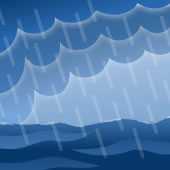STORM, FLOOD, AND HURRICANE RESPONSE

Working Safely in Confined Spaces
Background
The National Institute for Occupational Safety and Health (NIOSH) provides the following guidelines regarding work in confined spaces related to hurricane response. "Confined space" refers to a space which has limited openings for entry and exit, unfavorable natural ventilation which could contain or produce dangerous air contaminants, and/or physical hazards related to engulfment or collapse. There may be numerous additional physical hazards including moving machinery parts, electrical hazards, etc. There are numerous examples of co-workers and emergency response workers becoming overwhelmed when trying to rescue workers in confined spaces. It is critical that only those trained in confined space hazards and rescue procedures attempt such rescues.
Examples of confined spaces include but are not limited to storage tanks, pits, ventilation and exhaust ducts, sewers, tunnels, underground utility vaults, and pipelines. Water and wind destruction associated with hurricanes may create confined space conditions in parts of buildings that are not routinely considered confined spaces. For example, flooding and hazardous materials spills or releases may create dangerous confined space hazards in basements and enclosed rooms. Similarly, building damage and collapses may create confined space hazards by restricting entry and exit and exposing workers to physical or environmental hazards.
Additional information on confined spaces
Guidance to Help Prevent Injuries and Death Related to Entry into Confined Spaces in Hurricane Damaged Areas
Workers in or around confined spaces must be trained in the recognition of what constitutes a confined space and the potential hazards that may be encountered in them. Workers and rescue agencies in hurricane damaged areas that may enter a confined space must be familiar with and trained in confined space entry procedures as well as rescue requirements and techniques. At a minimum, employers and workers should:
- Treat all confined spaces as hazardous.
- Test atmospheric conditions prior to entry and continuously monitor them during the entire entry. A person trained in the proper use of a calibrated, direct-reading instrument must test for oxygen content, flammable gases and vapors, and potential toxic air contaminants, in that order. Never trust your senses to determine if the air in a confined space is safe. You cannot see or smell many toxic gases and vapors, nor can you determine if sufficient oxygen is present.
- Ensure that adequate atmospheric conditions are maintained in the spaces at all times through proper ventilation.
- In those situations in which safe atmospheric conditions cannot be maintained, evaluate if entry is absolutely necessary and/or if the work can be completed from outside the confined space. When entry is necessary, the appropriate respirator should be evaluated and worn by workers with thorough training in the use and limitations of respirators. Additional information on respirators
- Make sure that an attendant is present immediately outside the space in case the person in the space needs assistance, and ensure that an emergency retrieval or rescue method is available. Make sure a safe method of communication is available between the person entering the space and the attendant.
- Exit the space immediately if an unsafe condition develops.
- Ensure that structures are sound (safe) from collapse prior to entering confined spaces.
- Use proper personal protective equipment, which will be determined by the hazards that will be encountered in the confined space. Examples include eye/face, and head and foot protection, respiratory protection, safety belts, lifelines and harnesses.
- Ensure that properly trained workers control utilities(e.g., proper lockout/tagout procedures) prior to entry into confined spaces, including electrical services (primary and secondary), gas, propane, fuel oil, or other alternative energy sources (primary systems), water, sanitary systems, communications, and any secondary service systems (i.e., compressed, medical, or industrial gases.)
- Once confined spaces are identified, post warning signs to warn other response personnel, clean-up workers, and the public. When possible, physically block entry.
- Never enter a confined space to attempt an emergency rescue unless you have been trained in safe confined space entry and rescue procedures and have the proper tools and personal protective equipment.
Refer to OSHA standards for complete requirements
- Page last reviewed: January 26, 2012
- Page last updated: May 4, 2012
- Content source:
- National Institute for Occupational Safety and Health Office of the Director


 ShareCompartir
ShareCompartir